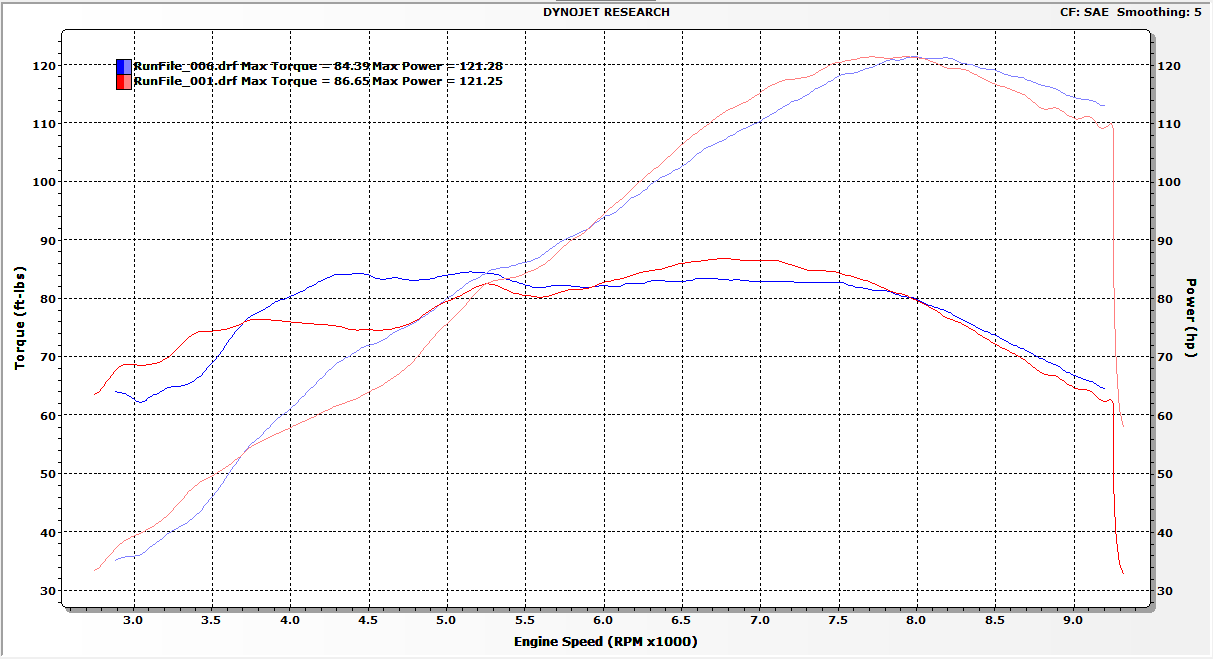carlson_mn
Well-known member
Nice work on the research you've done,I used the data from a dyno run of a stock gen II bike. It's the red line in this chart:Where'd you get the acceleration graphs for both the GenI and GenII?

I have the original DRF file, so I exported the raw data (no human error in reading the chart to get my data).
The max acceleration through all gears data is generated a program I started writing to analyze dyno data in more useful ways and to be able to actually compare potential performance between different vehicles, taking into account gear ratios, weight, etc. The Gen I acceleration data was generated from the Gen II dyno data (with the assumption that the engine hasn't changed), but taking into account the difference in weight and gear ratios between Gen I and Gen II. I believe I assumed an additional 200lbs of rider + gear on both bikes.
I think you're reading that chart wrong. The TQ is below 80 at 4500rpm, but right around 80 at 8000rpm. What I'm saying is that the acceleration is directly proportional to torque (ignoring air resistance). If you're comparing two different RPMs, whichever RPM has higher torque will give you more acceleration, as long as you are comparing RPMs in the same gear.So what you're saying is that acceleration should be faster at 4500rpms where the TQ is above 80ftlbs than at 8100rpms, where it falls below 80ftlbs?
I still have a tough time understanding how a higher hp output won't provide more acceleration than an area lower in the powerband with more torque, but less horsepower. Even if torque figures are down a bit the higher rpms will result in more 'work/power' output? I always thought that was the point of HP measurement - the total amount of torque over time. You don't have to try to answer that one again though. Thanks
/threadjack































































